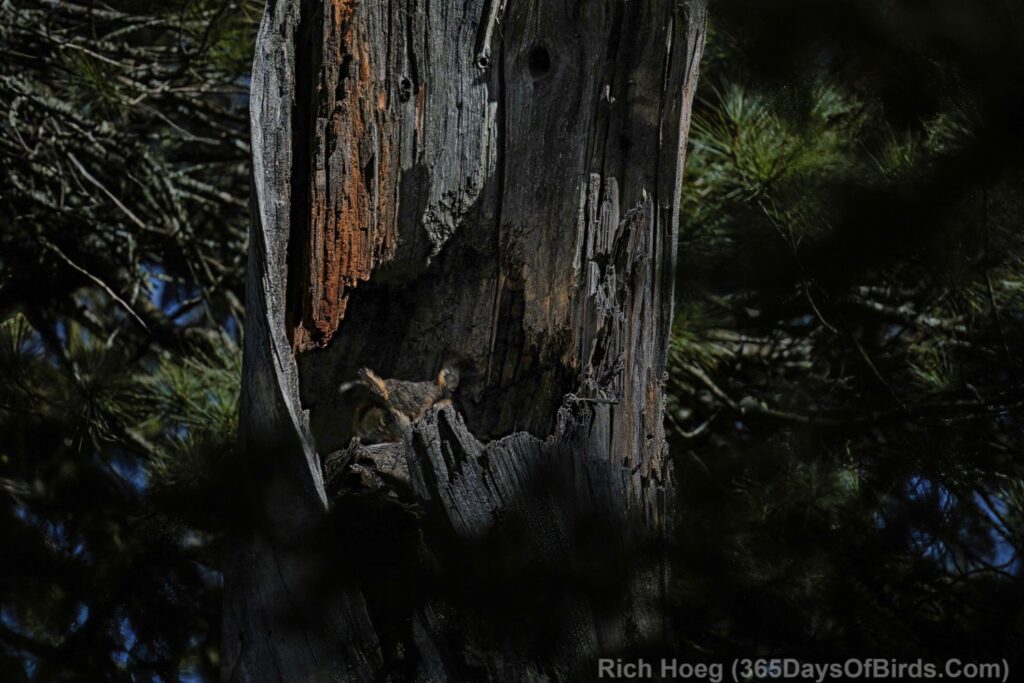I accepted the challenge last night, and photographed Amy, Momma Great Horned Owl, in the moonlight. I DID NOT use any artificial light or flash … only the light of the almost full moon (96% of full). Here is the end result, and then I will explain the process.
Here are the details of how I accomplished this photograph. I took the image at 10:15 pm, which was approximately 3 hours after sunset. My camera was my Sony A6300 with a 70-350 mm lens … extended to its full reach. The aperture was 6.5 and exposure time was 30 seconds with an ISO setting of 2,000 … thankfully owls often sit motionless for long periods of time because 30 seconds is a long exposure.
Using my weather app I had previously determined the moon last night would be at 96% of full and elevated 47 degrees above the horizon. I knew I wanted a moon a few days before the full moon as the light is almost identical, and the moon rises much earlier in the afternoon than the night of the full moon. Given the location and geometry of the nest, I also knew I needed a moon rather high in the sky in order for moonlight to filter down from above into the nest. Surrounding white pines would block direct moonlight early and later in the night. I had actually inspected the nest location a prior night about five days earlier when the available moonlight was 78%. My assessment at that time was there was not enough natural light for night owl photography.
Finally I needed to use manual focus. Auto focus does not work in the pitch dark. Here is how I proceeded. My first image was taken at 3,200 ISO. I would examine the results, and then adjust both my camera’s aim and focus. I took about ten photographs before I had the focus and air properly determined.
I hope to repeat this process twice more with this owl family … the April and May full moons. I definitely made mistakes during this process. Here are those errors:
- Bring more than one flashlight. While I never pointed the flashlight at the owl, or anywhere near the bird, I did need light to see buttons and switches on my camera. The cold weather (15F) caused my flashlight’s batteries to crump. I had to stop, hike home, and get another flashlight. When I returned I brought not one, but two working flashlights for my ultimately successful photography session.
- I should have determined where (the location) I wanted to take my images during the day, and then figured out my manual focus settings during daylight hours. I could then have placed sticks during the day on the ground exactly where I wanted my tripod located after dark given my manual focus settings (previously written down during the day). I will use this approach next time.
The entire photo session was fun. I tried to create a video, but it was too dark for movies. Last night I learned even more about night photography which is something I enjoy, while at the same time following ethical bird / owl photography rules … no flash or artificial light which would blind the bird.
Discover more from 365 Days of Birds
Subscribe to get the latest posts sent to your email.
An amazing photo Richard considering all of the challenges you faced. It’s 60 degrees here in Florida with a big, bright moon but no owls to shoot . Congrats and keep it up. Marty
Thanks for your work and sharing it!
This was a very interesting post and the photographe astounding!
Really good work, Rich. Enjoy your instructions and comments.
Outstanding photo, I love it!